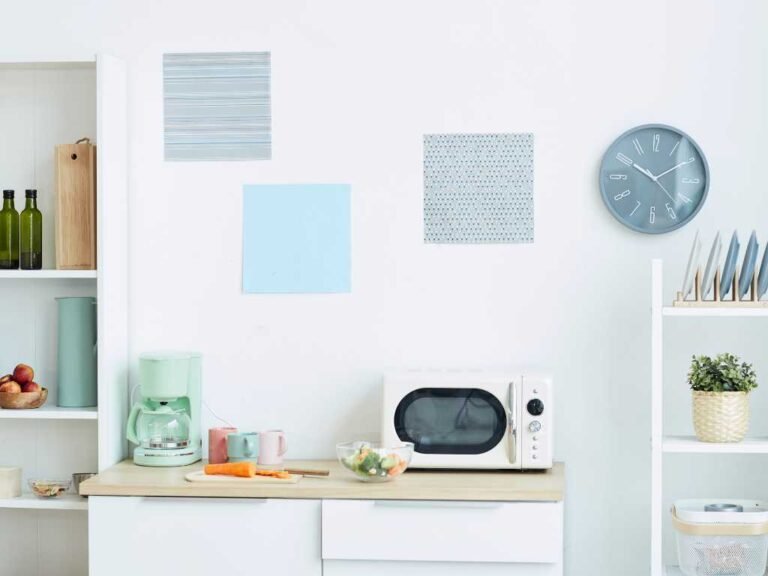How to Choose the Right College Dorm Room Bedding

Starting college is an exciting time, and moving into your dorm room is one of the first steps toward this new chapter in your life. One of the most important elements of your dorm room is your bed. After all, it’s where you’ll sleep, relax, and sometimes even study. Choosing the right dorm room bedding is essential for ensuring you have a comfortable and restful environment.
In this complete guide, we’ll explore everything you need to know about choosing the right college dorm room bedding. From understanding bedding sizes to selecting the best materials and balancing comfort with style, this guide will help you create a cozy and inviting space that feels like home.

Some of the links on this site are affiliate links, meaning I may earn a commission if you click through and make a purchase, at no additional cost to you. I only recommend products and services I truly believe in. Thank you for your support!
Table of Contents
- Introduction
- Understanding Dorm Room Bedding Sizes
- Choosing the Right Material for Your Bedding
- Bedding Essentials: What You Need
- Comfort vs. Style: Finding the Perfect Balance
- Allergy Considerations and Hypoallergenic Options
- Durability and Easy Care Bedding Options
- Budget-Friendly Bedding: How to Save Money
- Additional Accessories to Enhance Your Bedding
- Final Tips for Choosing the Right Bedding
- Related Articles
Understanding Dorm Room Bedding Sizes
Before you start shopping for dorm room bedding, it’s important to understand the size requirements. Most college dorms have beds that are a specific size, and choosing the wrong size bedding can lead to discomfort and frustration.
1. Twin XL Bedding
- Standard Size: The majority of college dorm rooms are equipped with Twin XL beds. This size is slightly longer than a standard twin bed, measuring approximately 39 inches wide by 80 inches long.
- Why It Matters: Twin XL bedding is necessary because regular twin sheets won’t fit properly on a Twin XL mattress. Make sure all your bedding, including sheets, mattress toppers, and mattress pads, are specifically labeled as Twin XL.
2. Check Your Dorm’s Specifications
- Confirm the Size: While Twin XL is the most common dorm bed size, it’s always a good idea to confirm your specific dorm’s bed size before purchasing bedding. Some dorms might have standard twin beds, or even full or queen beds, depending on the accommodations.
- Bedding Sets: Many retailers offer dorm-specific bedding sets that include everything you need in the correct size. These sets often include sheets, pillowcases, and comforters designed for Twin XL beds.
Pro Tip:
If your dorm provides a mattress topper or pad, take this into account when choosing your fitted sheets. Some mattress toppers can add height to your mattress, so you may need deep-pocketed sheets to ensure a proper fit.
Choosing the Right Material for Your Bedding
The material of your bedding plays a significant role in your comfort, durability, and how easy it is to care for. Here’s a breakdown of the most common bedding materials and their pros and cons:
1. Cotton
- Breathable and Soft: Cotton is one of the most popular bedding materials because it’s breathable, soft, and comfortable. It’s ideal for all seasons, keeping you cool in the summer and warm in the winter.
- Easy to Care For: Cotton bedding is generally easy to wash and care for, making it a practical choice for college students.
- Variety of Options: You can find cotton bedding in a range of styles, thread counts, and price points. Egyptian cotton and Pima cotton are known for their extra softness and durability.
2. Microfiber
- Affordable and Durable: Microfiber is a synthetic material made from finely woven polyester fibers. It’s often more affordable than cotton and is known for being durable and wrinkle-resistant.
- Soft and Cozy: Microfiber bedding is soft to the touch and can feel warm and cozy, making it a good choice for colder climates.
- Moisture-Wicking: Some microfiber sheets are designed to wick moisture away from the body, which can be helpful for students who tend to overheat while sleeping.
3. Jersey Knit
- T-Shirt Feel: Jersey knit sheets are made from a stretchy, soft fabric that feels like your favorite t-shirt. They’re comfortable and breathable, making them a great choice for students who want a casual, cozy feel.
- Low Maintenance: Jersey knit bedding is typically low maintenance and doesn’t wrinkle easily, making it a good option for busy students.
4. Flannel
- Warm and Cozy: Flannel is a heavyweight cotton fabric that’s brushed to create a soft, warm texture. It’s perfect for students attending college in colder climates.
- Ideal for Winter: Flannel bedding provides extra warmth and coziness during the winter months. However, it may be too warm for use in the summer.
Pro Tip:
Consider your personal preferences and the climate of your college when choosing bedding material. If you’re unsure, cotton or microfiber are versatile choices that work well in most situations.
Bedding Essentials: What You Need
When it comes to dorm room bedding, there are a few essential items you’ll need to ensure a comfortable and stylish bed. Here’s a list of must-have bedding items:
1. Fitted Sheet
- Secure Fit: A fitted sheet is designed to fit snugly over your mattress, keeping it in place and providing a smooth surface for sleeping.
- Twin XL Size: Make sure to choose a fitted sheet in the correct size, usually Twin XL for dorm beds.
2. Flat Sheet
- Layer of Comfort: A flat sheet goes on top of the fitted sheet and provides an extra layer of comfort and warmth. It also helps keep your comforter or blanket clean.
- Optional for Some: While some students prefer to sleep without a flat sheet, it’s a good idea to have one on hand in case you want the extra layer.
3. Comforter or Duvet
- Warmth and Style: A comforter or duvet is the top layer of your bedding and provides warmth. It’s also an opportunity to add style and personality to your dorm room.
- Duvet Covers: If you choose a duvet, consider getting a duvet cover. This makes it easier to wash and allows you to change the look of your bedding without buying a new comforter.
4. Pillows and Pillowcases
- Support and Comfort: Invest in a good quality pillow that provides the right level of support for your sleeping position. You’ll also need at least one pillowcase, but having a few extras is a good idea.
- Decorative Pillows: Add a few decorative pillows to enhance the look of your bed and create a cozy space for lounging.
5. Mattress Topper
- Extra Comfort: A mattress topper can add an extra layer of cushioning and comfort to your dorm bed, which is often needed since dorm mattresses can be thin and uncomfortable.
- Memory Foam or Egg Crate: Popular options for mattress toppers include memory foam for a supportive feel or egg crate foam for added comfort and breathability.
6. Mattress Protector
- Protection and Hygiene: A mattress protector is essential for keeping your mattress clean and protecting it from spills, stains, and allergens. It also adds a bit of extra padding to your bed.
Pro Tip:
Look for bedding sets that include several of these essentials, such as a fitted sheet, flat sheet, pillowcase, and comforter. This can save you time and money compared to buying each item separately.
Comfort vs. Style: Finding the Perfect Balance
When choosing dorm room bedding, it’s important to find a balance between comfort and style. Your bedding is a key part of your dorm room decor, so it should reflect your personal taste while also being functional.
1. Choose a Color Palette
- Match Your Decor: Start by choosing a color palette that complements the rest of your dorm room decor. Neutral colors like gray, white, or beige are versatile and can be easily paired with colorful accents.
- Express Your Personality: If you prefer something more vibrant, opt for bedding in bold colors or patterns that reflect your personality. Stripes, florals, and geometric patterns are popular choices.
2. Consider Texture
- Add Visual Interest: Adding texture to your bedding can create visual interest and make your bed feel more inviting. Consider mixing different textures, such as a smooth cotton sheet with a chunky knit blanket or a velvet pillow.
- Layering: Layering different fabrics and textures not only enhances the look of your bed but also allows you to adjust your bedding for different temperatures. For example, you can add a cozy throw blanket in the winter and remove it in the summer.
3. Comfort is Key
- Prioritize Comfort: While style is important, comfort should always be your top priority. After all, you’ll be spending a lot of time in your bed, so it’s essential to choose bedding that feels good to you.
- Test Before You Buy: If possible, feel the fabric and test the comfort of bedding items before purchasing. If you’re shopping online, read reviews to get an idea of the quality and comfort level.
Pro Tip:
If you can’t decide between two styles, consider choosing one set of bedding for each semester. You can switch out your bedding when the seasons change, giving your room a fresh new look.
Allergy Considerations and Hypoallergenic Options
If you have allergies or sensitivities, choosing the right bedding is crucial for your health and comfort. Here’s what to consider:
1. Hypoallergenic Bedding
- Reduce Allergens: Hypoallergenic bedding is designed to reduce the presence of common allergens like dust mites, mold, and pet dander. This can be especially important in dorm rooms, where dust and allergens can accumulate.
- Materials to Look For: Look for bedding made from hypoallergenic materials such as cotton, bamboo, or microfiber. These materials are less likely to trigger allergies and are easy to clean.
2. Dust Mite Covers
- Protect Your Mattress and Pillows: Consider using dust mite covers on your mattress and pillows. These covers create a barrier that prevents dust mites from accumulating and causing allergic reactions.
- Easy to Wash: Make sure the dust mite covers you choose are easy to remove and wash regularly to keep your bedding clean and allergen-free.
3. Avoid Feather or Down
- Potential Allergens: If you have allergies, it’s best to avoid bedding filled with feathers or down, as these materials can trigger allergic reactions in some people.
- Alternative Fillings: Instead, opt for synthetic or hypoallergenic down-alternative fillings that provide the same warmth and comfort without the allergens.
Pro Tip:
Wash your bedding regularly, at least once a week, to reduce the buildup of allergens. Use hot water and a mild detergent to keep your bedding fresh and clean.
Durability and Easy Care Bedding Options
As a college student, you’ll want bedding that’s durable and easy to care for. Here’s what to look for:
1. Durable Materials
- Long-Lasting: Choose bedding made from durable materials that can withstand frequent washing and daily use. Cotton, microfiber, and polyester blends are known for their durability.
- High Thread Count: While a high thread count often indicates softer and more durable sheets, it’s not the only factor to consider. Look for sheets with a thread count between 200 and 400 for a good balance of softness and durability.
2. Easy to Wash
- Machine Washable: Make sure your bedding is machine washable and can be tumble-dried. This makes it easy to keep your bedding clean and fresh, even with a busy schedule.
- Wrinkle-Resistant: Consider wrinkle-resistant bedding if you want to avoid the hassle of ironing. Microfiber and some cotton-polyester blends are less likely to wrinkle after washing.
3. Colorfastness
- Resistant to Fading: Choose bedding that’s colorfast, meaning it won’t fade after multiple washes. This is especially important if you choose dark or vibrant colors.
- Pre-Washed or Pre-Shrunk: Look for bedding that’s pre-washed or pre-shrunk to minimize the risk of shrinking after the first wash.
Pro Tip:
Keep an extra set of sheets and pillowcases on hand so you can change your bedding quickly without having to wait for laundry day.
Budget-Friendly Bedding: How to Save Money
College expenses can add up quickly, so it’s important to find ways to save money on dorm room bedding without sacrificing quality or comfort.
1. Shop Sales and Discounts
- Back-to-School Sales: Many retailers offer back-to-school sales that include discounts on dorm room essentials like bedding. Start shopping early to take advantage of these deals.
- Student Discounts: Some stores offer student discounts when you show your student ID. Don’t forget to ask about these discounts when shopping for bedding.
2. Consider Bedding Sets
- All-in-One Solution: Bedding sets are often more cost-effective than buying each item separately. Look for sets that include a fitted sheet, flat sheet, pillowcase, and comforter.
- Value for Money: While bedding sets may seem more expensive upfront, they often provide better value for money since they include everything you need in one purchase.
3. Shop Online
- Compare Prices: Shopping online allows you to easily compare prices from different retailers. Look for deals on popular websites like Amazon, Target, or Bed Bath & Beyond.
- Read Reviews: Online reviews can give you a better idea of the quality and comfort of bedding before you buy. Look for products with high ratings and positive feedback from other customers.
4. Use Coupons and Cashback Offers
- Coupon Codes: Before making a purchase, search for coupon codes online. Many retailers offer discounts through coupon websites or their own promotional emails.
- Cashback Apps: Consider using cashback apps like Rakuten or Honey, which offer cashback on purchases from certain retailers. This can help you save even more on your bedding.
Pro Tip:
If you’re on a tight budget, consider shopping at discount stores like TJ Maxx, Marshalls, or HomeGoods, where you can often find high-quality bedding at reduced prices.
Additional Accessories to Enhance Your Bedding
To make your dorm room bed even more comfortable and inviting, consider adding a few additional accessories:
1. Throw Blankets
- Extra Warmth and Style: A throw blanket adds an extra layer of warmth and can also serve as a stylish accent for your bed. Choose a blanket in a color or pattern that complements your bedding.
- Versatility: Throws are versatile and can be used on your bed, as a wrap for studying or lounging, or even as a decorative piece on your desk chair.
2. Body Pillow
- Comfort and Support: A body pillow provides additional comfort and support, especially if you’re a side sleeper. It can also be used as a decorative accent or for extra back support when sitting up in bed.
- Customizable: Look for body pillows that come with removable and washable covers, allowing you to change the look of your bed easily.
3. Bedside Caddy
- Convenient Storage: A bedside caddy attaches to the side of your bed and provides convenient storage for items like your phone, books, glasses, and remote control. This helps keep your essentials within easy reach and reduces clutter.
- Easy Access: Bedside caddies are especially useful in dorm rooms with limited space, as they free up space on your nightstand or desk.
4. Decorative Lights
- Create Ambiance: String lights or fairy lights can add a warm and cozy ambiance to your dorm room. Hang them above your bed or around the room to create a relaxing atmosphere.
- Personal Touch: Choose lights that match your room’s color scheme or add a personal touch with shaped or themed lights.
Pro Tip:
Don’t overcrowd your bed with too many accessories. A few well-chosen items can enhance your comfort and style without making your bed feel cluttered.
Final Tips for Choosing the Right Bedding
Choosing the right college dorm room bedding is an important part of creating a comfortable and inviting space. Here are some final tips to help you make the best decision:
- Consider Your Climate: Think about the climate of your college and choose bedding that will keep you comfortable year-round. Layering is key, so consider having a mix of lightweight and heavier blankets.
- Invest in Quality: While it’s tempting to go for the cheapest option, investing in quality bedding can make a big difference in your comfort and how long your bedding lasts. Look for durable materials and well-made items.
- Personalize Your Space: Your bedding is a reflection of your personal style, so don’t be afraid to choose colors, patterns, and textures that make you happy. Your dorm room is your home away from home, so make it a place where you feel comfortable and relaxed.
Pro Tip:
Wash your new bedding before using it for the first time. This removes any manufacturing chemicals or residues and makes your bedding softer and more comfortable.
Related Articles
Best Storage Solutions for Small College Dorm Rooms
Top 10 College Dorm Room Must-Haves
How to Make Your College Dorm Room Feel Like Home
Final Thoughts
Choosing the right college dorm room bedding is more than just about finding something that looks good. It’s about creating a space where you feel comfortable, relaxed, and ready to take on the challenges of college life.
By considering factors like size, material, comfort, and style, you can find the perfect bedding that meets your needs and reflects your personality.
Whether you’re starting your freshman year or returning for another semester, the right bedding can make all the difference in how your dorm room feels.
Take the time to explore your options, invest in quality pieces, and most importantly, choose bedding that makes you feel at home.






